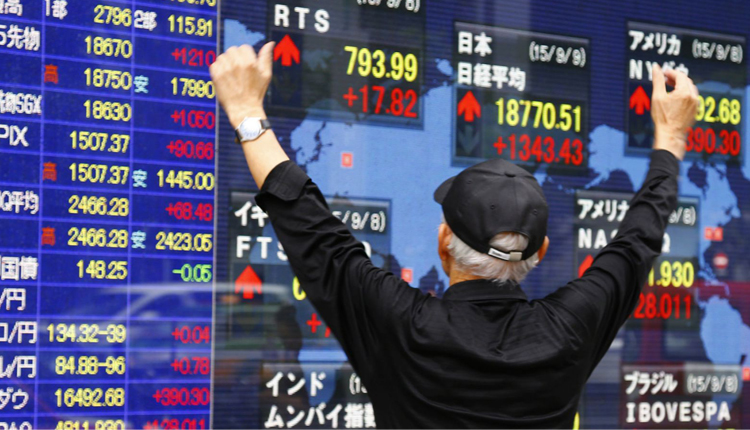Asian markets traded higher Tuesday afternoon, as the People’s Bank of China published its new loan prime rates that would result in cheaper borrowing costs for companies.
Mainland Chinese stocks edged up by the afternoon, with the Shanghai composite fractionally higher and the Shenzhen component rising 0.31 percent. The Shenzhen composite added 0.453 percent.
In Japan, the Nikkei 225 rose 0.42 percent in afternoon trade, while the Topix index added 0.61 percent. Australia’s S&P/ASX 200 gained 0.99 percent as most of the sectors traded higher. Over in South Korea, the Kospi advanced 0.89 percent.
In Hong Kong, the Hang Seng index was largely flat following an earlier slip, with shares of Chinese tech giant Tencent rising 0.48 percent.
Overall, the MSCI Asia ex-Japan index traded 0.4% higher.
The Reserve Bank of Australia’s (RBA) July meeting minutes, released on Tuesday, showed the central bank would consider further easing if evidence suggested “this was needed to support sustainable growth in the economy and the achievement of the inflation target over time.”
The RBA kept interest rates at all-time lows earlier in the month after easing by a quarter point in both June and July.
China’s new loan prime rates
The People’s Bank of China (PBOC) debuted its new loan prime rates (LPR) under a new mechanism that was unveiled over the weekend. Some analysts have said the reform can be seen as a guided rate cut.
The new 1-year LPR was set at 4.25 percent, as compared to 4.31 percent previously. The 5-year LPR was at 4.85 percent.
“The new fluctuating LPR replaces their existing fixed benchmark lending rate,” Kathy Lien, managing director of foreign exchange strategy at BK Asset Management, wrote in a Monday note. “By allowing the rate to float, they are basically allowing interest rates to fall.”
“The lower the rate, the more positive the reaction in the market,” Lien said. “Aside from this rate cut, investors are also waiting for fiscal stimulus from China.”
Overnight stateside, the Dow Jones Industrial Average surged 249.78 points to close at 26,135.79. The S&P 500 rose 1.2 percent to finish its trading day at 2,923.65, while the Nasdaq Composite added 1.4 percent to close at 8,002.81.
These gains add to a rebound that started last week after the Dow posted its worst session of 2019. The S&P 500 is still down 1.9 percent in August and off more than 3% from a recent record.
Currencies and oil
The U.S. dollar index, which tracks the greenback against a basket of its peers, was at 98.315 after seeing lows below 97.5 last week.
The Japanese yen traded at 106.58 against the dollar after weakening from levels below 106.5 yesterday. The Australian dollar was at $0.6779 after seeing an earlier low of $0.6751.
Oil prices were little changed in the afternoon of Asian trading hours. The international benchmark Brent crude futures contract was fractionally higher at $59.77 per barrel, while U.S. crude futures were flat at $56.21 per barrel.
Source: CNBC


